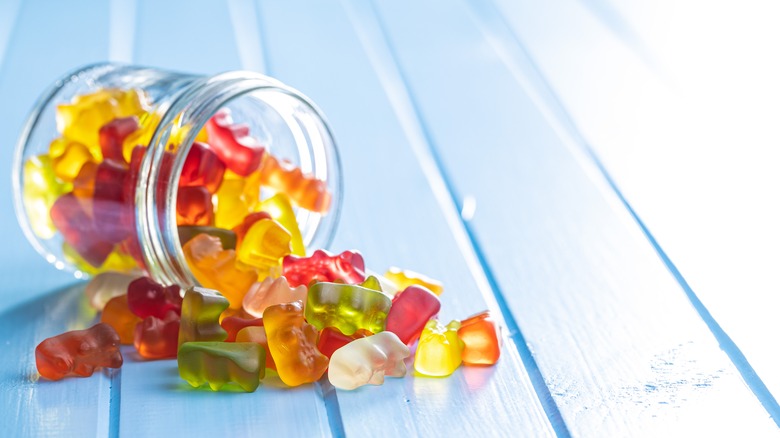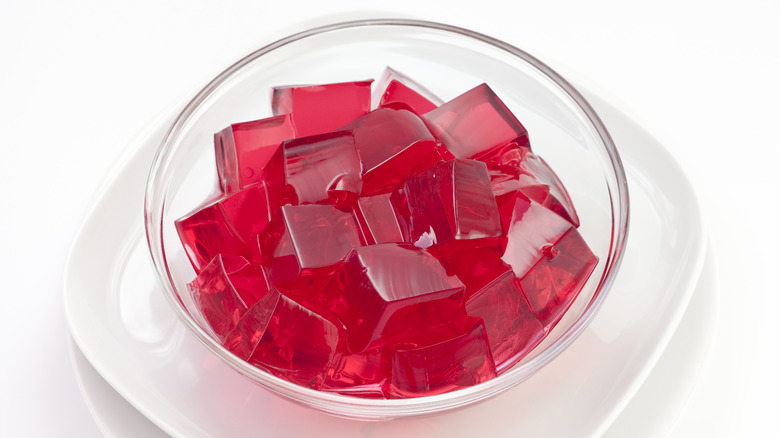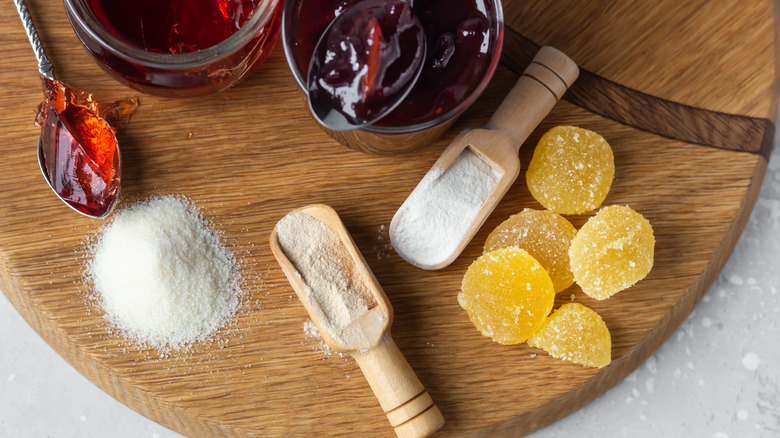Why Some Gummy Candy Actually Isn't Vegan
Candy is often one of those food categories where you're better off not asking too many questions — unless you follow a plant-based diet. Whether a brand claims that its gummy snacks are "made with real fruit," or has an illegal amount of lead in its hot chocolate, there's frequently something to uncover when it comes to our favorite sweets.
But for vegans, navigating the candy landscape can get even more complicated. Many candies, even the not-obvious ones, contain some form of dairy. Candies made with red food coloring sometimes contain carmine, a colorant derived from a type of beetle. And you could even get into the complicated process behind refined sugar, which often involves contact with an animal product called bone char.
However, the most common mistake vegans make when approaching candy is reaching for a simple bag of gummy bears. Most gummy candy is made using gelatin, which is made from animal parts and used to achieve that distinctive chewy texture in gummies.
What is gelatin?
Gelatin, which is used as a thickener and stabilizer in some foods, is made from cow or pig ligaments, tendons, and skin, which have been broken down into a flavorless substance. Usually sold in powdered form, gelatin is what puts the jiggle in Jell-O. Gelatin is actually a form of collagen, a vital protein found in humans and animals alike.
People who cook frequently with animal products may have come across gelatin in forms other than candy, such as meat-based stocks or bone broth. When bones are simmered and broken down, the gelatin is extracted, which is why your stock can sometimes gel solid in the fridge. Though you may not want to think about it, this is the same process by which most commercial gummies get their texture. Luckily, there will always be a new influx of candy makers trying to address the public's concerns. There are dozens of brands out there making vegan gummies without gelatin, like Better Bears, Vegobears, and Joyride.
Vegan gummies
One common gelatin substitute is pectin, which is a naturally occurring fiber found in the cell walls of fruit. Certain fruits, like apples, cranberries, and quince, contain high levels of pectin, which is why they are often used to make jams. That jelly-like consistency comes from natural pectin in the fruit, but you can also buy commercially produced pectin at the store. Though usually used in jams for fruits that don't have a lot of pectin on their own, it can also be used to make vegan gummies.
Agar-agar and carrageenan are two other popular gelatin substitutes, both made from seaweed. Arrowroot and tapioca powder can also be used to make vegan gummies, as can Xanthan gum, which is made from fermented bacteria found on certain green plants. It's quite easy to find vegan recipes for gummies using all of these products if you'd like to try making your own.
You might even be surprised to learn that Sour Patch Kids are vegan, at least in the United States. However, Sour Patch Kids distributed in the U.K. do appear to contain gelatin. So are Swedish Fish and Dots! There are plenty of products like this, which are often referred to as "accidentally vegan," which can be identified by checking the ingredient list on the package. If there's no gelatin listed, then you may be in the clear.



